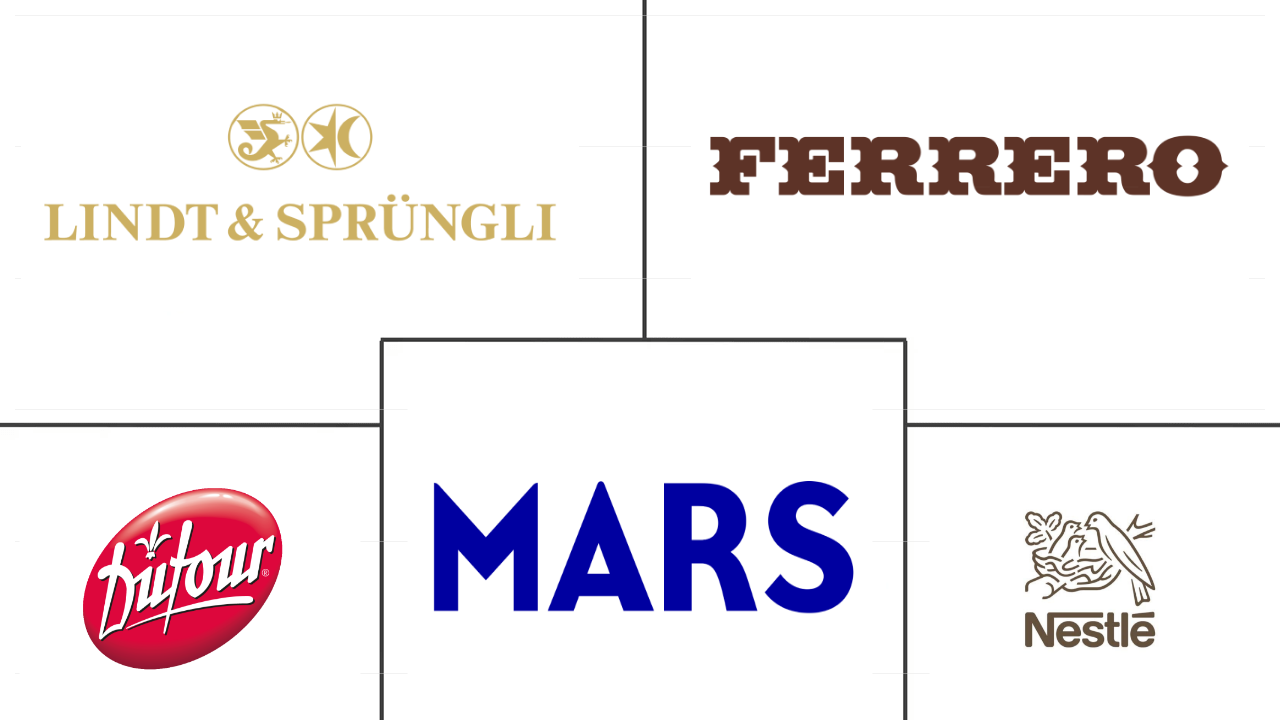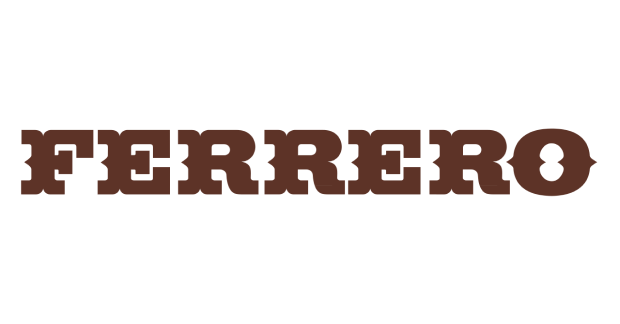Market Size of italy chocolate Industry
|
|
Study Period | 2018 - 2030 |
|
|
Market Size (2024) | USD 2.76 Billion |
|
|
Market Size (2030) | USD 3.78 Billion |
|
|
Largest Share by Distribution Channel | Supermarket/Hypermarket |
|
|
CAGR (2024 - 2030) | 5.38 % |
|
|
Fastest Growing by Distribution Channel | Online Retail Store |
Major Players |
||

|
||
|
*Disclaimer: Major Players sorted in no particular order |
Italy Chocolate Market Analysis
The Italy Chocolate Market size is estimated at 2.76 billion USD in 2024, and is expected to reach 3.78 billion USD by 2030, growing at a CAGR of 5.38% during the forecast period (2024-2030).
2.76 Billion
Market Size in 2024 (USD)
3.78 Billion
Market Size in 2030 (USD)
3.90 %
CAGR (2018-2023)
5.38 %
CAGR (2024-2030)
Largest Segment by Confectionery Variant
60.64 %
value share, Milk and White Chocolate, 2023
The innovative flavor offerings possible in White chocolate, followed by the preference for varied taste profiles in the country, are anticipated to drive segmental growth.
Largest Segment by Distribution Channel
46.42 %
value share, Supermarket/Hypermarket, 2023
The product assortment and shelf space in supermarkets allow consumers to compare the products, which has emerged as one of the major factors driving segmental growth.
Fastest-growing Segment by Confectionery variant
5.94 %
Projected CAGR, Dark Chocolate, 2024-2030
Rising awareness among consumers toward the nutritional content and stress-relieving ability of dark chocolate is anticipated to drive the demand in the country.
Fastest-growing Segment by Distribution Channel
6.79 %
Projected CAGR, Online Retail Store, 2024-2030
The ease of shopping experience through online channels and the increasing number of retailers present in this channel has become the major driver in the segment.
Leading Market Player
40.26 %
market share, Ferrero International SA, 2022

The extensive product offerings, a larger distribution network, and a wider presence throughout the region have made Ferrero International SA a leading market player.
Widespread retail network providing accessibility to full range chocolates brands drove the domination of Supermarket/ hypermarket and convenience stores together holding almost 75% value share in 2023
- Among different distribution channels, supermarkets and hypermarkets are considered the primary sales channels for chocolate products across the country. Together, they held more than 46.2% of the overall retail sales in 2023. The major reason behind this was the strong penetration of popular supermarkets and hypermarket chains and consumers' bulk buying behavior due to heavy discounts from these stores. Conad, Selex, Coop, Vege, Agora, and Carrefour were the popular chains in Italy. As of 2021, Conad had 3,332 stores across the country.
- Convenience stores are the second most widely preferred distribution channel for chocolate purchases after supermarkets and hypermarkets. The sales of chocolate confectionery through convenience stores are estimated to register volume growth of 14.36% during 2024-2027, with a 29.2% volume share in 2027. The broader reach and easy access to private label brands drive the consumer preference for traditional grocery stores over other retail channels. Chocolate sales are estimated to record the highest CAGR through convenience stores, reaching a sales value of USD 1,124.47 million in 2030.
- In response to the rising number of online shopping, the increasing number of online retailers is anticipated to drive online sales of chocolates during the forecast period. In 2022, there were 50.85 million internet users in Italy, and the country’s internet penetration rate stood at 84.3%. Chocolate sales through online channels are estimated to register a CAGR of 6.24% during the forecast period, reaching USD 531.45 million in 2030. Eataly, Venchi, Cioccolato Lindt, IperEspresso, and Gobino are key online retailers delivering chocolates throughout Italy. They offer various discounts and coupons to consumers.
Italy Chocolate Industry Segmentation
Dark Chocolate, Milk and White Chocolate are covered as segments by Confectionery Variant. Convenience Store, Online Retail Store, Supermarket/Hypermarket, Others are covered as segments by Distribution Channel.
- Among different distribution channels, supermarkets and hypermarkets are considered the primary sales channels for chocolate products across the country. Together, they held more than 46.2% of the overall retail sales in 2023. The major reason behind this was the strong penetration of popular supermarkets and hypermarket chains and consumers' bulk buying behavior due to heavy discounts from these stores. Conad, Selex, Coop, Vege, Agora, and Carrefour were the popular chains in Italy. As of 2021, Conad had 3,332 stores across the country.
- Convenience stores are the second most widely preferred distribution channel for chocolate purchases after supermarkets and hypermarkets. The sales of chocolate confectionery through convenience stores are estimated to register volume growth of 14.36% during 2024-2027, with a 29.2% volume share in 2027. The broader reach and easy access to private label brands drive the consumer preference for traditional grocery stores over other retail channels. Chocolate sales are estimated to record the highest CAGR through convenience stores, reaching a sales value of USD 1,124.47 million in 2030.
- In response to the rising number of online shopping, the increasing number of online retailers is anticipated to drive online sales of chocolates during the forecast period. In 2022, there were 50.85 million internet users in Italy, and the country’s internet penetration rate stood at 84.3%. Chocolate sales through online channels are estimated to register a CAGR of 6.24% during the forecast period, reaching USD 531.45 million in 2030. Eataly, Venchi, Cioccolato Lindt, IperEspresso, and Gobino are key online retailers delivering chocolates throughout Italy. They offer various discounts and coupons to consumers.
| Confectionery Variant | |
| Dark Chocolate | |
| Milk and White Chocolate |
| Distribution Channel | |
| Convenience Store | |
| Online Retail Store | |
| Supermarket/Hypermarket | |
| Others |
Italy Chocolate Market Size Summary
The Italian chocolate market is experiencing a robust growth trajectory, driven by a combination of traditional retail channels and the increasing influence of online sales. Supermarkets and hypermarkets dominate the distribution landscape, accounting for a significant portion of chocolate sales due to their extensive reach and consumer-friendly pricing strategies. Convenience stores also play a crucial role, offering easy access to chocolate products and benefiting from the popularity of private label brands. The rise of online shopping is further enhancing market dynamics, with key players like Eataly and Venchi capitalizing on the growing number of internet users in Italy to boost their sales through digital platforms. This shift towards online retail is expected to continue, supported by the country's high internet penetration rate.
The Italian chocolate industry is characterized by its rich tradition of high-quality products and a strong focus on brand image and packaging. Consumers in Italy show a preference for chocolates with a strong brand presence, and dark chocolate has gained significant popularity over other varieties. The market is fairly consolidated, with major companies like Lindt & Sprüngli, Ferrero, and Nestlé holding substantial market shares. Recent product launches and marketing campaigns, such as those by Ritter Sport and Venchi, highlight the industry's commitment to innovation and consumer engagement. The market's growth is also reflected in the increasing sales of unique chocolate offerings, which cater to diverse consumer preferences and price points.
Italy Chocolate Market Size - Table of Contents
-
1. MARKET SEGMENTATION (includes market size in Value in USD and Volume, Forecasts up to 2030 and analysis of growth prospects)
-
1.1 Confectionery Variant
-
1.1.1 Dark Chocolate
-
1.1.2 Milk and White Chocolate
-
-
1.2 Distribution Channel
-
1.2.1 Convenience Store
-
1.2.2 Online Retail Store
-
1.2.3 Supermarket/Hypermarket
-
1.2.4 Others
-
-
Italy Chocolate Market Size FAQs
How big is the Italy Chocolate Market?
The Italy Chocolate Market size is expected to reach USD 2.76 billion in 2024 and grow at a CAGR of 5.38% to reach USD 3.78 billion by 2030.
What is the current Italy Chocolate Market size?
In 2024, the Italy Chocolate Market size is expected to reach USD 2.76 billion.

